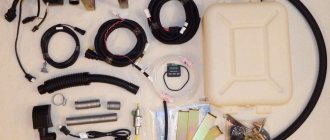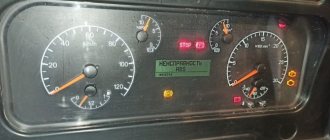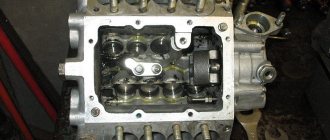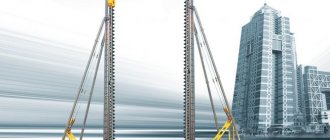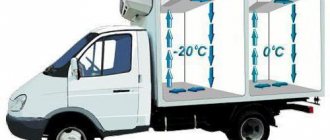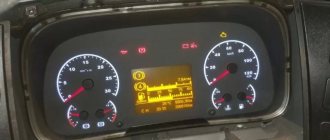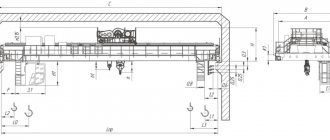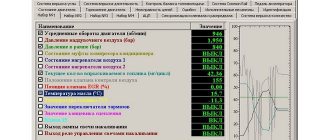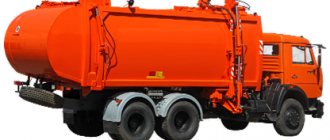Repair warranty
Carrier always provides a warranty for all equipment sold. Before the expiration of the warranty period, the buyer is given the right to free elimination of possible manufacturing defects in the equipment. Warranty periods may vary from 1 to 3 years depending on the specific type of equipment.
LLC "BAYAR", being an installation organization, provides guarantees for all types of repair, diagnostic and service work. The warranty period also varies depending on the type of equipment.
When should Carrier refrigerators be serviced?
Service maintenance can prevent premature equipment failure.
Maintenance of Carrier refrigerated trucks should be carried out:
Our company provides high-quality servicing services for refrigeration equipment. You can be sure that our specialists are among the best in this field.
The Carrier refrigerator is a refrigeration and heating equipment used for transporting food, seedlings and other goods that require special temperature conditions.
Stages of repair at Container Leasing
Most repair problems can be solved on site, with a visit to the customer. The wizard begins with diagnostics, during which the condition is checked:
The inspection helps to identify the cause of the breakdown and begin repair work. Further, the technician’s task depends on the nature of the malfunction. You may just need to install a new freon hose or replace the compressor completely. The sooner a problem is detected, the faster and cheaper it can be solved.
When the work is completed, we will carry out a maintenance run and tune-up to check that the equipment is working properly.
Model range overview
There are several modifications from this manufacturer on the market. For example, the V Series model features a high level of cooling performance, a flat evaporator device, the ability to air condition the driver's cabin and the presence of a clip-on hose and fitting system.
Technical parameters of the refrigerator H Thermo King V-300:
The C Series is designed specifically for use in hot climates. Thanks to the ultra-flat evaporator fan, a high level of air exchange is ensured. The control unit is equipped with a digital thermostat and ES300C evaporator. Using a thermostat, you can fix the required temperature for the equipment. This series is also distinguished by the presence of an automatic system defrosting mode.
Technical characteristics and performance of the C-200 Max model:
The T series is a monoblock design that runs on diesel fuel. To control the system, a Truck Smart Reefer controller is provided, which can be configured according to user requirements. This refrigerator is designed to maintain optimal temperature conditions during the transportation of perishable products.
Technical data and characteristics of the T-1000R modification:
| Total weight of the structure | 466 kg |
| Temperature | -20…+12°С |
| Air flow volume at 0 Pa pressure level | 3200 m³ per hour |
| Electrical voltage | 24 V |
| Refrigerant charge volume | 4.1 kg |
| Dimensional parameters of the entire installation | 1888*919*692 mm |
| Number of cylindrical parts | 3 |
| Power | 14.6 kW |
| Compressor displacement | 424 cm³ |
| Working life between maintenance | 2000 hours |
| Power consumption at low temperatures | 5200 W |
| Power for heat | 6400 W |
The SLXe series features high levels of performance and low noise levels during operation. The equipment is used for transporting frozen products in small cargo vehicles. The design includes a condenser and an evaporator, which are connected to each other using flexible hoses.
Technical characteristics and parameters of the SLXe 200 model:
Microprocessor alarms:
• A 232 - INCORRECT SET VALUES off. • The set temperature is out of tolerance: enter the correct value or turn the unit off/on • A 233 – INCORRECT MODEL NO. off. • Incorrect unit model number: enter correct number • A 234 - INCORRECT SERIAL NO. off. • Incorrect unit serial number: enter the correct number • A 235 - MICROPROCESSOR SERIAL NO. is INCORRECT off. • Incorrect microprocessor serial number: enter the correct number • A 236 - SEMI TRAILER REGISTRATION NO. is INCORRECT off. • Incorrect semi-trailer number: enter the correct number • A 237 - INCORRECT OPERATING PARAMETER off. • Incorrect value of the function parameter: enter the correct value • A 238 - INCORRECT CONFIGURATION 1 trip. • Configuration 1 is incorrect: enter the correct value or turn the unit off/on • A 242 - DISCHARGE PRESSURE CALIBRATION ERROR off. • The calibration of the discharge pressure sensor is broken • A 243 - SUCTION/EVAPORATOR CALIBRATION ERROR off. • Suction/Evaporator pressure sensor calibrated • A 246 - EPROM WRITE ERROR off. • Memory writing error: turn off / on the unit • A 249 - MICROPROCESSOR ERROR off.
Operating principle of a refrigerated container
The refrigerated container system is closed and sealed. It contains freon, a cooling gas. In this case, R-134a.
Through the suction line, this gas enters the compressor. The compressor pumps this gas and then it enters the condenser, where it is brought to a boil and becomes colder. From the condenser the gas enters the receiver. The receiver plays the role of an expansion tank. This is where the excess pressure is released. Next, the gas passes through the dryer filter, i.e. the gas is dried and supplied through the expansion valve to the evaporator. Next, the evaporator fans take the cold away from the evaporator, blowing cold air from top to bottom. The air passes through the container, circulates, returns back to the top and, thus, becomes colder with each circle. Due to this, the temperature decreases.
( 2 ratings, average 5 out of 5 )
Operating principle of a refrigerated container
The refrigerated container system is closed and sealed. It contains freon, a cooling gas. In this case, R-134a.
Through the suction line, this gas enters the compressor. The compressor pumps this gas and then it enters the condenser, where it is brought to a boil and becomes colder. From the condenser the gas enters the receiver. The receiver plays the role of an expansion tank. This is where the excess pressure is released. Next, the gas passes through the dryer filter, i.e. the gas is dried and supplied through the expansion valve to the evaporator. Next, the evaporator fans take the cold away from the evaporator, blowing cold air from top to bottom. The air passes through the container, circulates, returns back to the top and, thus, becomes colder with each circle. Due to this, the temperature decreases.
How does a reefer container work in heating mode?
When the container is working at its best, the evaporator fans are activated, only in this case they take warm air from the heating elements - heating elements.
The heating elements are located under the evaporator of the container. The container takes in air at the top and blows warm air down. This causes heating inside.
All processes are controlled by the controller. The controller opens and closes valves, monitors sensors, turns fans on and off, and ensures continuous operation.
Refrigeration unit
The refrigeration unit of a refrigerated container is a “cassette” block in which electronics and components are installed.
The composition and characteristics of electronics can vary greatly depending on the brand of the container (Carrier Transcold, Daikin, ThermoKing, Sabroe, Seacold, Mitsubishi). If you want to understand their differences in detail, read the article https://ref-konteyner. ru/blog/kakie-byvayut-brendy-refkonteinerov
The most popular brands are Carrier and Thermo King.
Despite the fact that there are differences between manufacturers, they are also very significant between the models of these brands. We described all the details in this article https://ref-konteyner. ru/blog/modelnyi-ryad-refkonteinerov-carrier
In the future, in this article, we will provide information using the example of the Carrier brand and the most popular model in the world, ThinLine, which has been consistently produced for more than 30 years.
The main elements of a refrigerated container installation:
Frame
Refrigerated container bodies come in different sizes: 10 feet, 20 feet, 40 feet and 45 feet. You can read about the features of these sizes in our article Dimensions and dimensions of a refrigerated container
It is important to understand that the structure of the hull can vary greatly, based on the dimensions of the refrigerated container, manufacturer and year of manufacture.
What is the body made of?
For example, let's take the most popular size - 40 feet. The container body consists of a supporting frame (vertical and horizontal corner beams) at the corners of which there are fittings (eyelets for loading and unloading the container) and transverse floor beams.
Walls
The wall of a refrigerated container is a sandwich made of polyurethane foam panels (100 mm thick) with an outer covering of stainless steel 2-3 mm thick (since 2000) or “riveted” aluminum (before 2000). The internal coating also consists of stainless steel (shiny walls) or aluminum (white walls), 1 mm thick.
Internal borders. They are also called reinforced sides. In some buildings, refrigerated containers were made to order from the shipping line. They are designed to avoid “swelling” of the housing walls. This occurs when a loaded reefer container is placed on the ground. As a result of the pressure of the load, the body inflates. If you use the refrigerator as a stationary refrigerator and do not move it loaded, then you will not see any special advantages of this modification.
A metal sheet 0.6 cm thick is installed on the cross beams of the supporting frame. Next comes 10 cm thick foam. 3 cm plywood. And a durable T-shaped aluminum profile that can easily withstand a regularly operating loader with goods.
In a 45ft refrigerated container the floor is flat.
Ceiling
The ceiling is the same sandwich, 15 cm thick. 35-grade foam is used. The inner surface is aluminum (white color) or stainless steel (shiny ceiling). The outside is made of stainless steel.
Doors
The doors are made of the same multi-layer panels as the walls and ceiling of the building. The doors swing open to an angle of 270°, which ensures convenient loading and unloading of products. The thickness of the sandwich is 10 cm. 50th foam is used. The inner side is made of stainless steel. The outer side is often made of aluminum. Less commonly made of stainless steel. There is rubber sealing at the end of the doors. Also, the doors are equipped with special latches that allow the cargo compartment of the refrigerator to be hermetically sealed.
The doors of a refrigerated container are one of its most important parts. It is extremely important to ensure that the doors and rubber bands are maintained. The number of profiles is several hundred, which makes replacement almost impossible. Repairing this element is extremely difficult. It is very useful to watch our video on how to care for them
Additional elements.
Hanging paths (hooks) for meat carcasses.
This add-on is produced separately. It is not available in the factory version.
PVC curtains on the door.
Must be purchased separately. We highly recommend purchasing them, as they allow you to avoid sudden temperature changes (internal and external) if you are actively loading or unloading goods into a container. You can purchase from us by following this link
Instructions for control panels
Since thermoking refrigerators operate using a remote control (abbreviated as RC), detailed instructions are included with the device. It consists of several chapters:
The document contains more than 60 pages, so the information in it is presented in great detail. It is recommended that you read the manual in its entirety. Both the user’s safety and the service life of the purchased unit depend on this.


